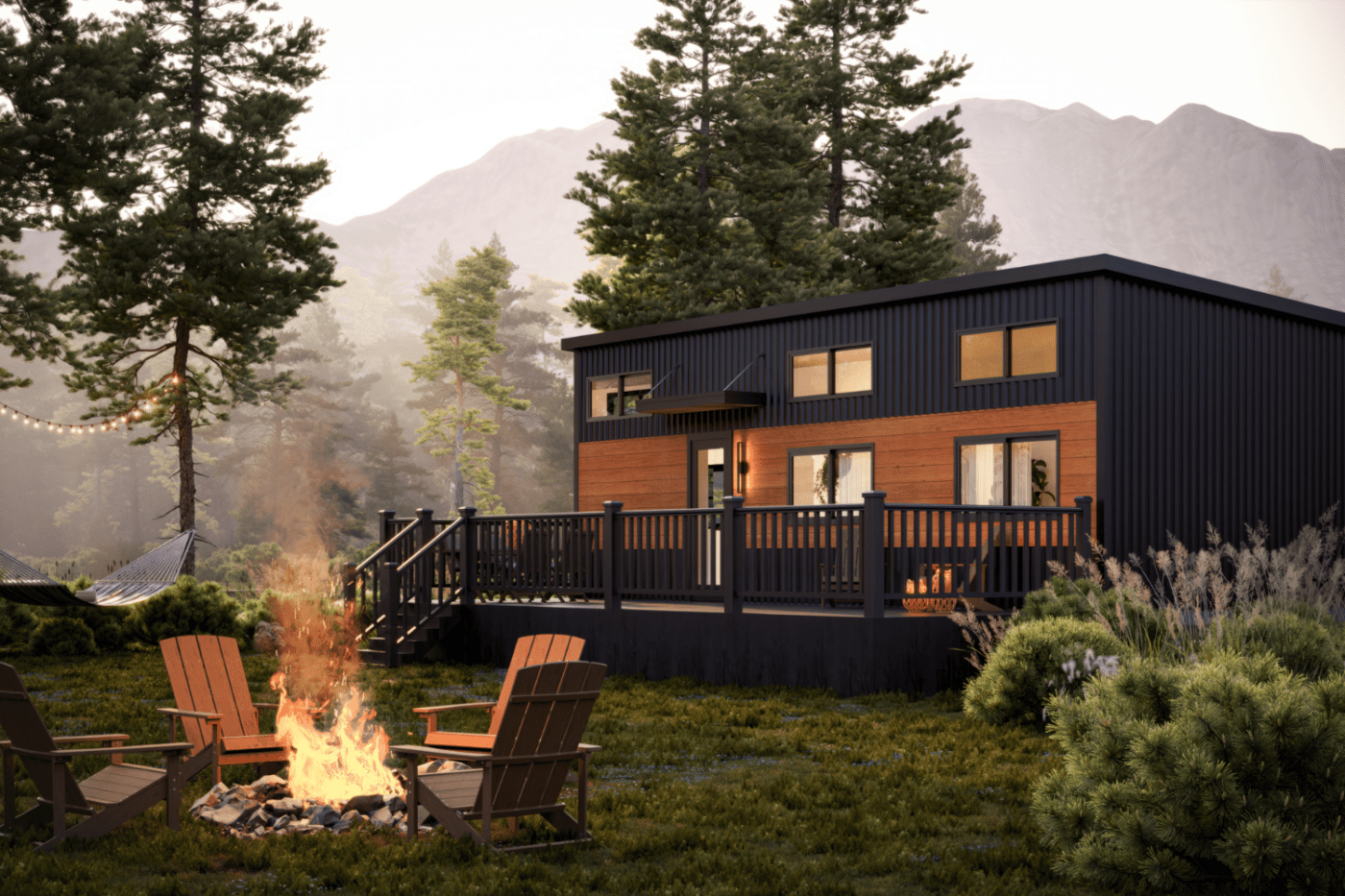
Colorado is a state full of beautiful views and wonderful activities to enjoy. Yet the price of housing tends to be a bit of a hurdle when trying to find a place to live. A more recent solution to this has been the idea of legalizing tiny park model homes as a more permanent solution to housing.
They’re affordable, perfectly sized homes, but it is a difficult process to start relaxing in your Tiny Home. But we want to make that process easy for you, so worry not, you can still relax on your journey to relaxing in the Tiny Home of your dreams.
Colorado has adopted the 2018 International Residential Code (IRC) with Appendix Q and the 2015 International Energy Conservation Code (IECC) to regulate Tiny Homes. In most cases many counties go by that or modify it with their own specifications.
Statewide, all structures must have an approved insignia, adhere to administrative rules, and be properly installed and inspected. Certain specifications for Tiny Homes are required, so make sure your structure follows these tiny house laws in Colorado.
In addition to these specifications you will also need to obtain a permit through the Building Department (but don’t worry, we have you covered with those details later on).
Disclaimer: While the information written in this blog is accurate, we recommend you check with your local laws to make sure that your desires are attainable.
What is A Tiny Home?
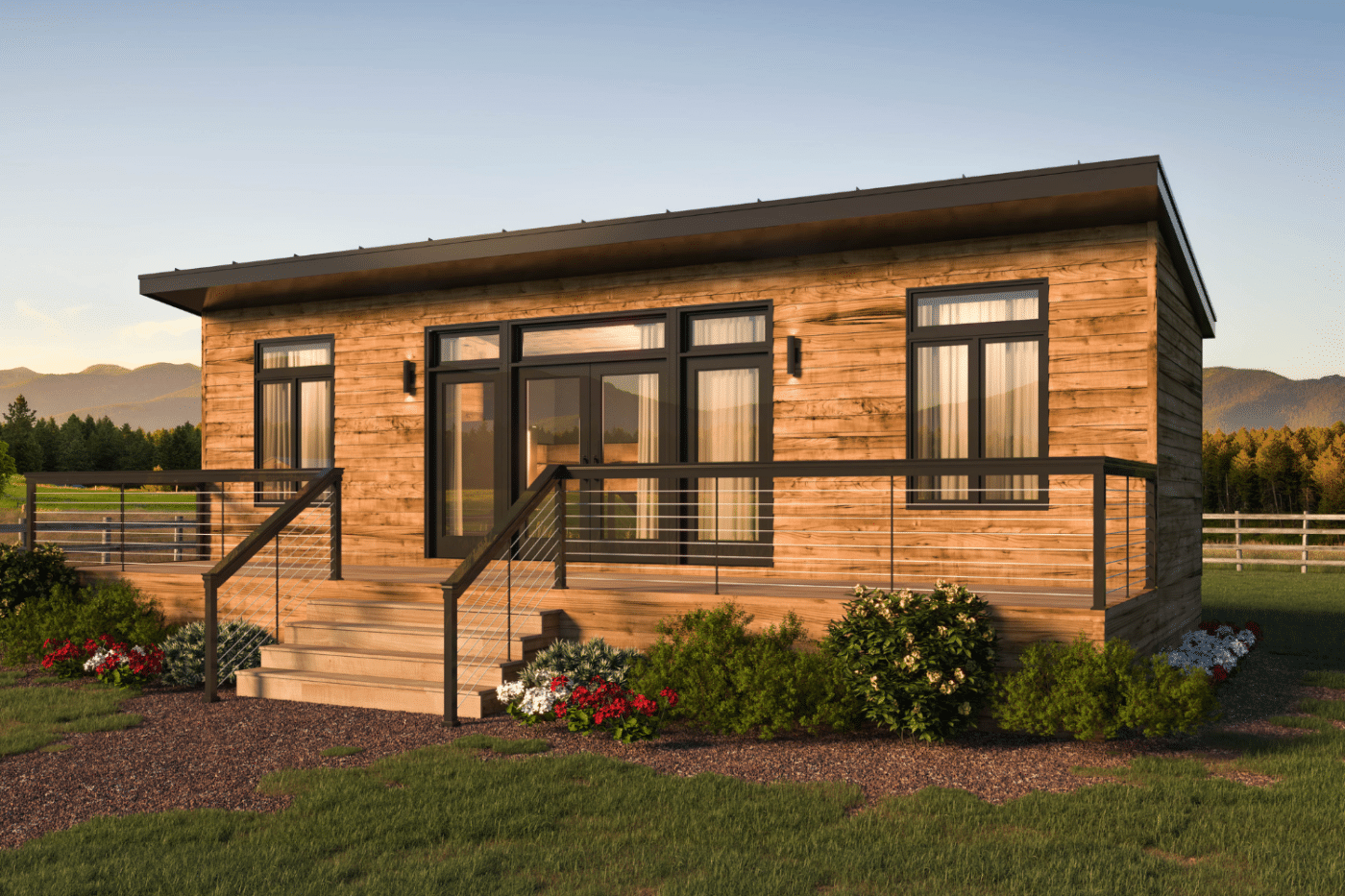
Our Park Model Tiny homes are built on a trailer base and can be located nearly anywhere you wish. Traditionally, tiny homes are homes that have 400-700 square feet of liveable space. So, a tiny home, quite literally, takes all the conveniences of a full-size home and just makes a smaller living space.
Keep in mind that some counties may call a Park Model home an RV while others fully embrace them as tiny homes. To gain clarity on how your county classifies buildings like these, get in touch with your building department or municipality office.
Yet, if you still have questions, take a look at this blog, where we compare and contrast the differences between Park Models and Tiny Houses.
Are park Models The Same Thing As Tiny homes?
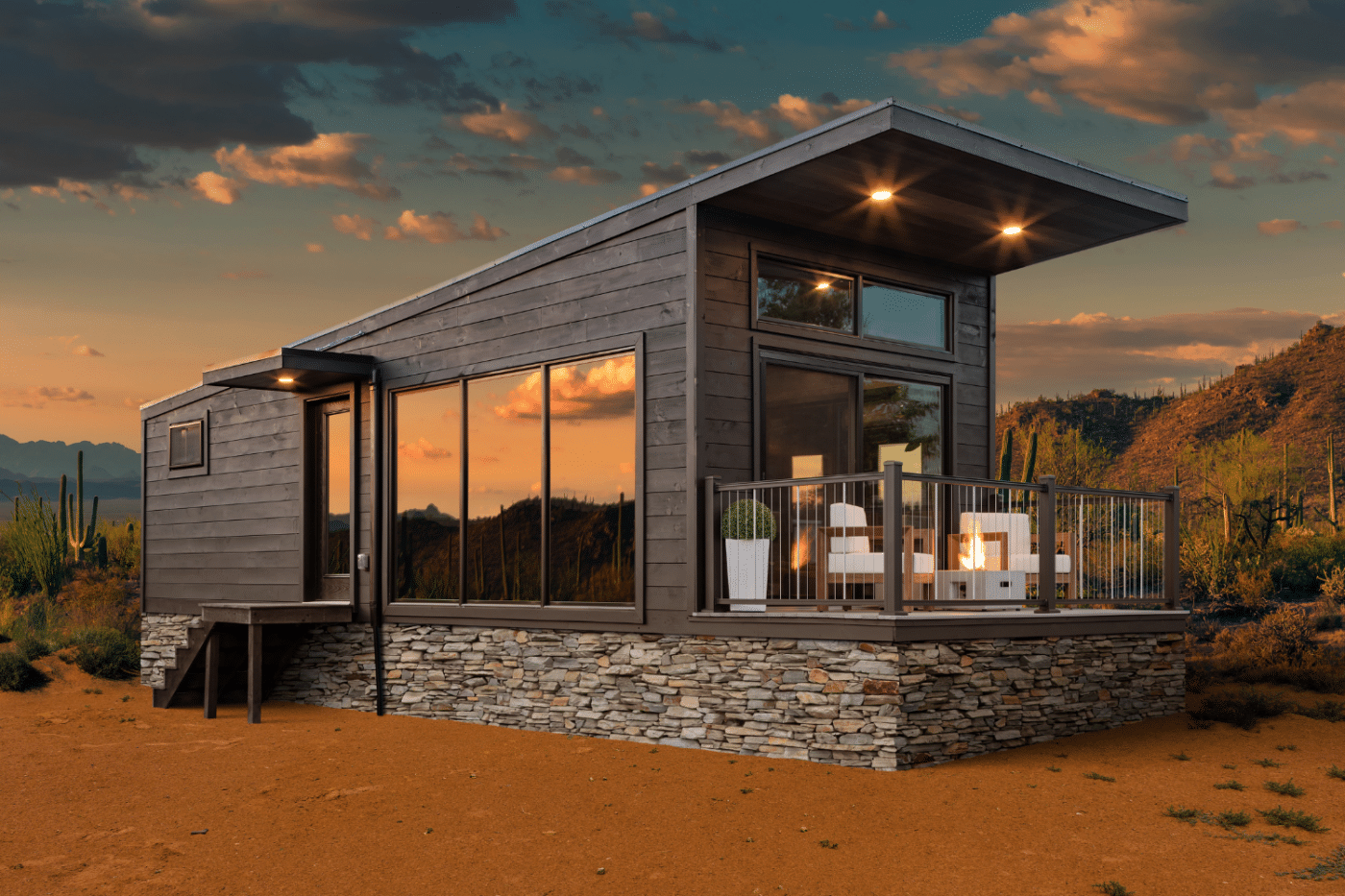
Yes. Park model homes are tiny homes. All of the park model tiny homes we have at Zook Cabins are considered THOWs and built to RVIA standards. However, RVIA is not the only tiny home certification. To learn more about the most common certifications check out out blog RVIA VS NOAH tiny homes.
can I rent a tiny home In Colorado?
Yes!
In the state of Colorado, there are several tiny park-model homes that you can rent to stay in. We do not personally own these tiny homes as a company, but we did build them!
Cañon City, CO
Durango, CO
What Counties in Colorado Allow Tiny Homes?
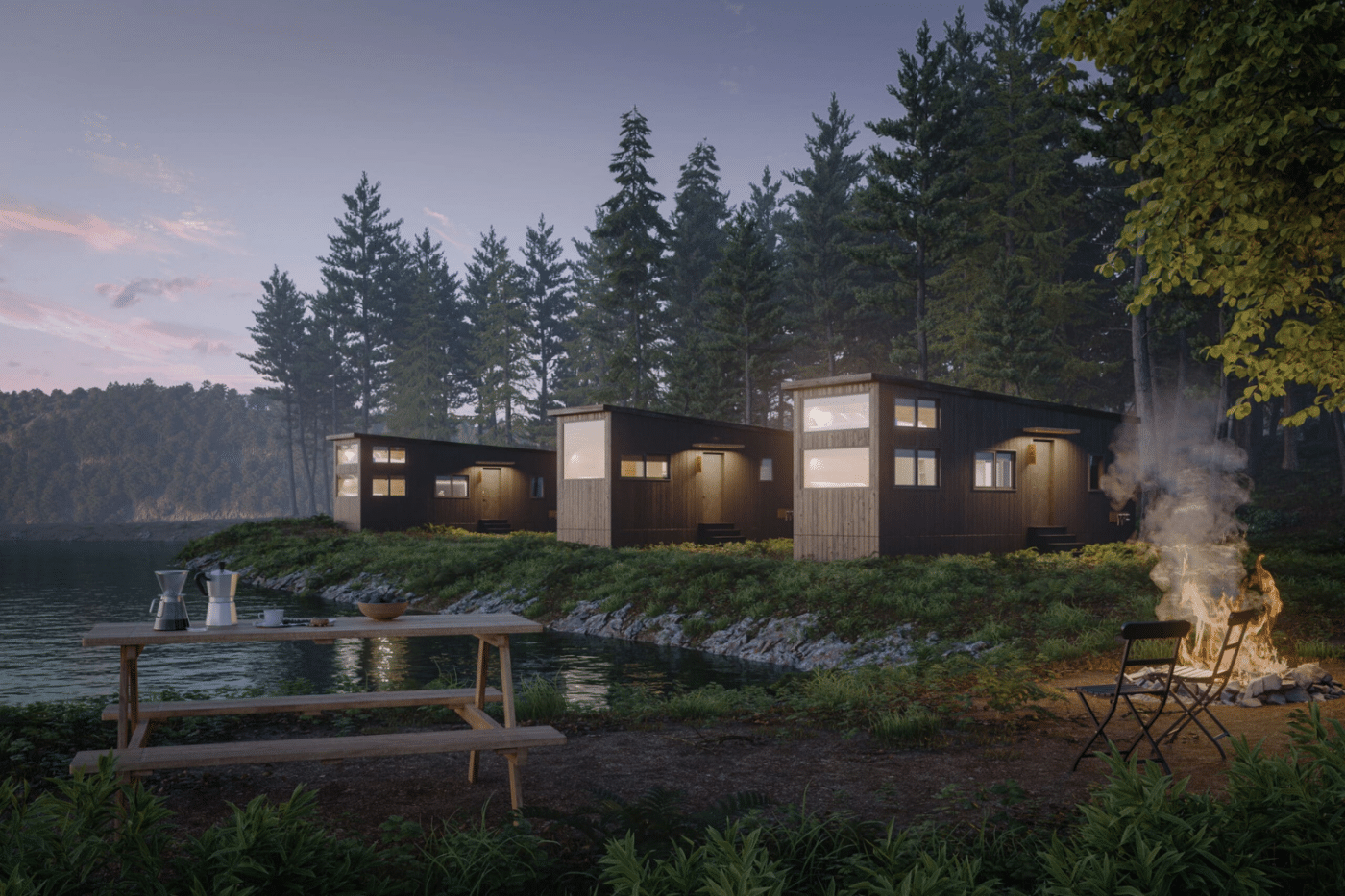
Colorado is relatively tiny home-friendly. From what we can find, there was not one county that flat-out said “no” to having a tiny home option. However, we did find a large majority of counties that gave a very clear yes to tiny home living.
Counties are listed from largest to smallest regarding available information on Tiny Homes.
Does El Paso County, Colorado, Allow Tiny Homes?
Yes, Tiny Homes can either be at a single lot or a recreational vehicle park. If at an RV park, they must be compliant with ANSI RVIA standards (and all of our park models are). They must also be finished on all sides with approved sidings such as finished wood panel, vinyl, brick or stone veneer, or stucco finish.
Similarly, Tiny Houses must be compliant with ANSI RVIA standards and have the approved types of sidings on all sides. One Tiny House is allowed on an individual lot or parcel unless it’s an Agricultural (A-35) zoning district where two Tiny Houses may be allowed. There are specifications for Tiny Houses and what they must have before it can be approved through application.
Colorado Springs, Colorado
Tiny Houses are allowed in Colorado Springs! They even allow Tiny House Communities with restrictions. Tiny House Communities should have a minimum size of 20,000 square feet on a maximum of two acres. The maximum residential density is 25 Tiny Houses per acre with no Tiny House being 10 feet from another.
Pikes Peak, Colorado
Pikes Peak allows Tiny Houses that are complicit under IRC standards. A manufactured Tiny House is allowed on a block and tie-down foundation or a permanent, frost-protected foundation. When using a permanent foundation, it will need to be designed by a Colorado-licensed design professional.
Does Denver County, Colorado Allow Tiny Homes?
Yes, Denver does allow for Tiny Homes as long as they are maintained and allow for minimum standards for light, ventilation, heating, and insect and rodent control. Denver even has an organization that is advocating for homes to prevent homelessness, learn more here.
Denver, Colorado
The capital of Colorado, Denver, has had a housing shortage throughout recent years, reaching a concerning amount. Local organizations have recognized Accessory Dwelling Units as a way to solve this problem. A recent zoning law has made it so homeowners can build an ADU big enough to house a family.
Does Jefferson County, Colorado Allow Tiny Homes?
Yes, Tiny Houses are allowed. There are no minimum size requirements for permanent residences if they meet building code requirements. A building permit is required.
Golden, Colorado
The City of Golden allows Tiny Homes when in residentially zoned lots, on a foundation permanently installed to the ground, with a minimum of 70 square feet, a City of Golden building permit, and other considerations. A Planned Unit Development zone district would be an option for a group of Tiny Homes and requires application approval.
Does Adams County, Colorado Allow Tiny Homes?
Yes, they allow Tiny Homes with a minimum home size of 100 square feet and a maximum of 400 square feet.
If you’re interested in the idea of living in a Tiny Home Village, the county offers the option with a permit. Each village must have more than ten homes, and the lot size must have a minimum of one-half acre. For more information, check out their specific development standards and regulations.
Does Larimer County, Colorado Allow Tiny Homes?
Yes, Tiny Homes are allowed with a minimum of 70 square feet in habitable rooms, a minimum of 6’8” in ceiling height, and 6’4” in bathrooms and kitchens. You are also allowed the flexibility of having a pre-fabricated Tiny House or building your own on-site under a valid building permit.
To be considered legal, a Tiny House not on wheels must have a building permit, be designed to meet site-specific weather conditions, and be installed on a permanent foundation. For more information, check out this page.
Does Boulder County, Colorado Allow Tiny Homes?
Yes, Boulder County does allow Tiny Homes even in unincorporated parts of the county. They must be on a permanent foundation, have a site plan review, and must have water service. It must also be compliant with the 2015 International Residential Code (IRC), which states habitable rooms must have a floor area of no less than 70 square feet and no less than 7 feet in horizontal dimension.
Does Pueblo County, Colorado Allow Tiny Homes?
Yes, Pueblo County adopted the 2018 International Residential Code, Appendix Q that described Tiny Houses as single-dwelling units. They should be on a permanent foundation and permanently connected to utilities. If constructed off-site, it should be inspected and approved for compliance.
Does Broomfield County, Colorado Allow Tiny Homes?
Yes, Tiny Homes are considered ADUs and are allowed on properties that include single-family residential uses.
ADUs are restricted to 50% of the principal dwelling unit or a maximum of 800 square feet, whichever is less. ADUs cmay only have 2 permanent residences and they require a building permit.
For more information on the ways Bloomfield County allows secondary buildings, take a look at their ADU guide.
Does Garfield County, Colorado, Allow Tiny Homes?
Yes! Accessory Dwelling Units (ADUs) must have a maximum floor area of 1200 square feet. There can only be one ADU with a primary single-family home, and a building permit is required. For more information or to get started, visit this link.
Does La Plata County, Colorado Allow Tiny Homes?
Yes, one ADU is allowed on a single residence. Some areas require permits, while others do not. Check out this site to see if you need a permit and what kind of one you need.
Does Eagle County, Colorado Allow Tiny Homes?
Yes, Tiny Homes are allowed in Eagle County. They must be on a permanent foundation with an approved source of potable water and wastewater. If it is a Tiny House on Wheels, it must be at an approved campground. For more information, read this.
Does Fremont County, Colorado Allow Tiny Homes?
Yes, with a minimum of 250 square feet and a maximum of 1000 square feet. A Tiny Home can not have no more than two bedrooms. Only one ADU is allowed on a lot or parcel. For more information, check out this site.
Does Routt County, Colorado Allow Tiny Homes?
Yes, they have specifications for each city and town in Routt County. Unincorporated Routt County and the city of Steamboat Springs can be as big as 400 square feet. The towns of Oak Creek and Yampa can be as big as 500 square feet. Find the specifications here.
Does Park County, Colorado Allow Tiny Homes?
Yes, and it is a popular destination for Tiny House lovers! Stick-built dwellings must have a living room of more than 220 square feet, a separate closet, a kitchen sink, a separate bathroom, and acceptable light for the size. Modular and manufactured dwellings must have 600 square feet.
Does Gunnison County, Colorado Allow Tiny Homes?
Yes, Gunnison County adopted Appendix Q from the 2018 International Residential Code that states Tiny House are allowed if they are 400 square feet or less in floor area, excluding lofts. Lofts are a floor level located more than 30 inches above the main floor on one or more sides with a ceiling height of less than 6’8” and used as a sleeping space.
Does Alamosa County, Colorado Allow Tiny Homes?
Yes, Tiny Homes can have a floor area that is less than 750 square feet with a minimum of 500 square feet. The lot area can have 7500 square feet and the lot width can be 75 ft. Contact their Building Department for more information.
Does Pitkin County, Colorado Allow Tiny Homes?
Yes, Pitkin County adopted Appendix Q. This means Tiny Houses must be 400 square feet or less excluding lofts, and should be used as single dwelling units. Air leakage rate should not exceed 0.30 cubic feet per minute at 50 Pascals of pressure per square foot. There should be permanently installed lighting and mechanical ventilation. More information can be found here.
Does Archuleta County, Colorado Allow Tiny Homes?
Yes, if it is a permanent residence, it must meet building codes, requires a building permit, and must be less than 400 square feet of floor area. If it is temporary, a temporary use permit for a 120-day camping season is allowed each year.
Archuleta County uses these requirements. Find the applications here.
Does Clear Creek County, Colorado, Allow Tiny Homes?
Yes, they do! Single-dwelling units do not have any minimum square footage, and they are allowed in any residential zoning district in the county after all state and local department codes are met. Mobile Tiny Homes, or RVs, are difficult to find a site to park at.
They are fine for temporary use as you can live in a Mobile Tiny Home for up to 2 weeks in a 1-year period on vacant land without a permit, and up to 1 month in a 1-year period with a permit. Get in contact with their Building Department to learn more.
Does San Miguel County, Colorado Allow Tiny Homes?
Yes, San Miguel County recognizes Tiny Homes as Accessory Dwelling Units (ADUs). They are limited to a maximum of 800 square feet and accessories to a single-family residence in high-density, medium-density, or low-density zone districts. They also offer an affordable housing rental development called Sunnyside.
Does Conejos County, Colorado Allow Tiny Homes?
Yes, they do. A Tiny House must not exceed 600 square feet in floor area, and it must be permanently anchored to a foundation with permanent utility connections. It should not be moveable, in the case you would want it moveable, they also allow Park Model Homes. Park Models are a unique type of RV that should not exceed 400 square feet and can be mounted on wheels. Check out their site for more information.
Does Huerfano County, Colorado Allow Tiny Homes?
Yes, Huerfano County has a city named Walsenburg that is very Tiny House-friendly. It was the first city in the state and among the nation to permit Tiny Houses. It, like all other counties, has to be on a foundation connected to utilities.
Walsenburg wanted to attract new taxpaying permanent residents with this, so they eliminated the square-footage minimum and stairway regulations as well as reduced the exit door width.
Does Gilpin County, Colorado Allow Tiny Homes?
Yes, but it is a bit different from other countries. It is defined as “camping” whether temporary or permanent. Private camping is allowed for up to 30 days per year.
The county has recently adopted the 2018 International Residential Code, so some aspects may have changed. Building permits are still required, contact the Building Division for more information.
Does Ouray County, Colorado Allow Tiny Homes?
Yes! Ouray County has established Tiny Homes to be 800 square feet or less on a permanent foundation. The county also adopted the 2018 International Residential Code which must have one room measuring a minimum of 70 square feet, one complete bathroom, one complete kitchen, a Certificate of Occupancy issued by the Ouray County Building Inspector, and other qualifications.
Counties with Unclear Park Model Tiny Home Regulations In Colorado
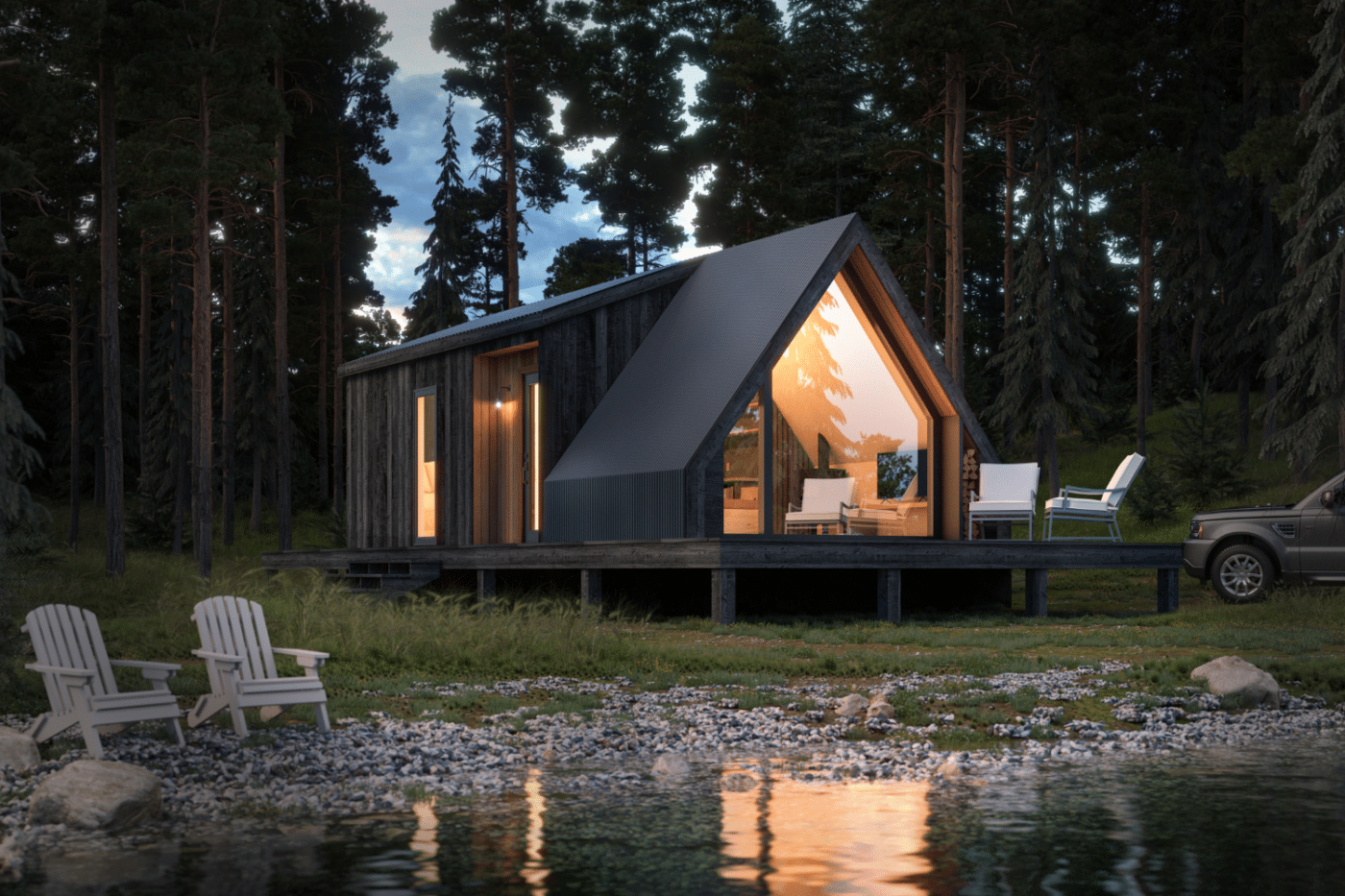
Now that we covered some of the counties that 100% cover the idea of tiny living there are still quite a few left. These counties offer some kind of alternative living buildings but are a bit ambiguous. We highly recommend that in these counties, you seek specific assistance about what is or is not acceptable.
Does Arapahoe County, Colorado Allow Tiny Homes?
Yes, with specific criteria.
Tiny Homes in Arapahoe County must have the intent of creating affordable housing within the county, promoting efficient use of land, ensuring adequate infrastructure, and preserving the general character of established agricultural and residential areas in unincorporated Arapahoe County.
This permit application will give you more information on the details.
Does Mesa County, Colorado Allow Tiny Homes?
Yes, with specific conditions.
Mesa County allows Tiny Homes specifically for workforce housing. Workforce housing is for essential workers in order to accommodate housing needs.
Mesa County acknowledges that when the workforce cannot find housing, the rest of the community suffers. Thus, Tiny Homes have been deemed as allowable.
Does Delta County, Colorado Allow Tiny Homes?
Delta County allows a recreational vehicle (RV) to be temporarily used as a dwelling during the construction of a permanent home, provided the occupant is the property owner or contractor. This use is limited to 90 days or until the new home is habitable. An RV or similar temporary structure can be considered a single-family residence if connected to permanent infrastructure, including power, water, and a sewer or permitted sewage system.
Does Summit County, Colorado Allow Tiny Homes?
Yes, ADUs are permitted in most residential zoning districts, provided they are rented to a local workforce member called The ADU Assistance Program. ADUs can be integrated into your primary residence, situated above or below a detached garage, or built as standalone units.
If you think this may be an option for you, find out more information using this link.
Does Morgan County, Colorado Allow Tiny Homes?
Morgan County allows Tiny Homes and they undergo the same permitting as manufactured homes on permanent foundation. If the Tiny Home is on wheels, it is considered a recreational vehicle. Once approved, the Tiny Home will have a metal plate insignia installed by the Department of Housing.
Does Elbert County, Colorado Allow Tiny Homes?
In Elbert County, the use of Tiny Houses is subject to specific regulations to ensure compliance with the Land Use Code. Tiny Houses, whether on wheels or foundations, may be considered zoning violations if they do not meet established standards for residential structures. To avoid violations, property owners should consult with the Building Department before placing or constructing a Tiny House.
Does Lake County, Colorado Allow Tiny Homes?
Typically, no. All zone districts have development standards and regulations. Most Tiny Homes do not meet the minimum occupied structure size of 600 square feet that is required in most zone districts.
Counties Without Any Clear Guidelines on Tiny Homes in Colorado

Baca County, Cheyenne County, Custer County, Delta County, Dolores County, Kit Carson County, Mineral County, Prowers County, Saguache County, Sedgwick County, Washington County, and Yuma County are all counties that do not have specifically listed building departments, and are overseen by the Department of Housing. For more information on where to get your Tiny House inspected and who to contact, go to this page.
Does Montezuma County, Colorado Allow Tiny Homes?
Montezuma County does not have a building department and does not enforce any residential building codes. However, individuals are still required to obtain the proper permits before beginning construction in the county.
In this case, the best way to get the information you need is to contact your local municipality in Montezuma County.
Does Phillips County, Colorado Allow Tiny Homes?
Although Phillips County does not have a building department, it still enforces provisions written in the Land Use Code.
The drafted code states that a Tiny Home, referred to as a manufactured home in the Code, should be installed and secured with applicable state and County regulations, the street address should be visible from the street, and they should have secure utility connections.
Does Costilla County, Colorado Allow Tiny Homes?
Yes, tiny homes are a housing option in Costilla County. However, there is no specific building department to contact.
Costilla County requires that all tiny houses be a minimum of 600 square feet.
Frequently Asked Questions About Colorado Tiny Home Laws
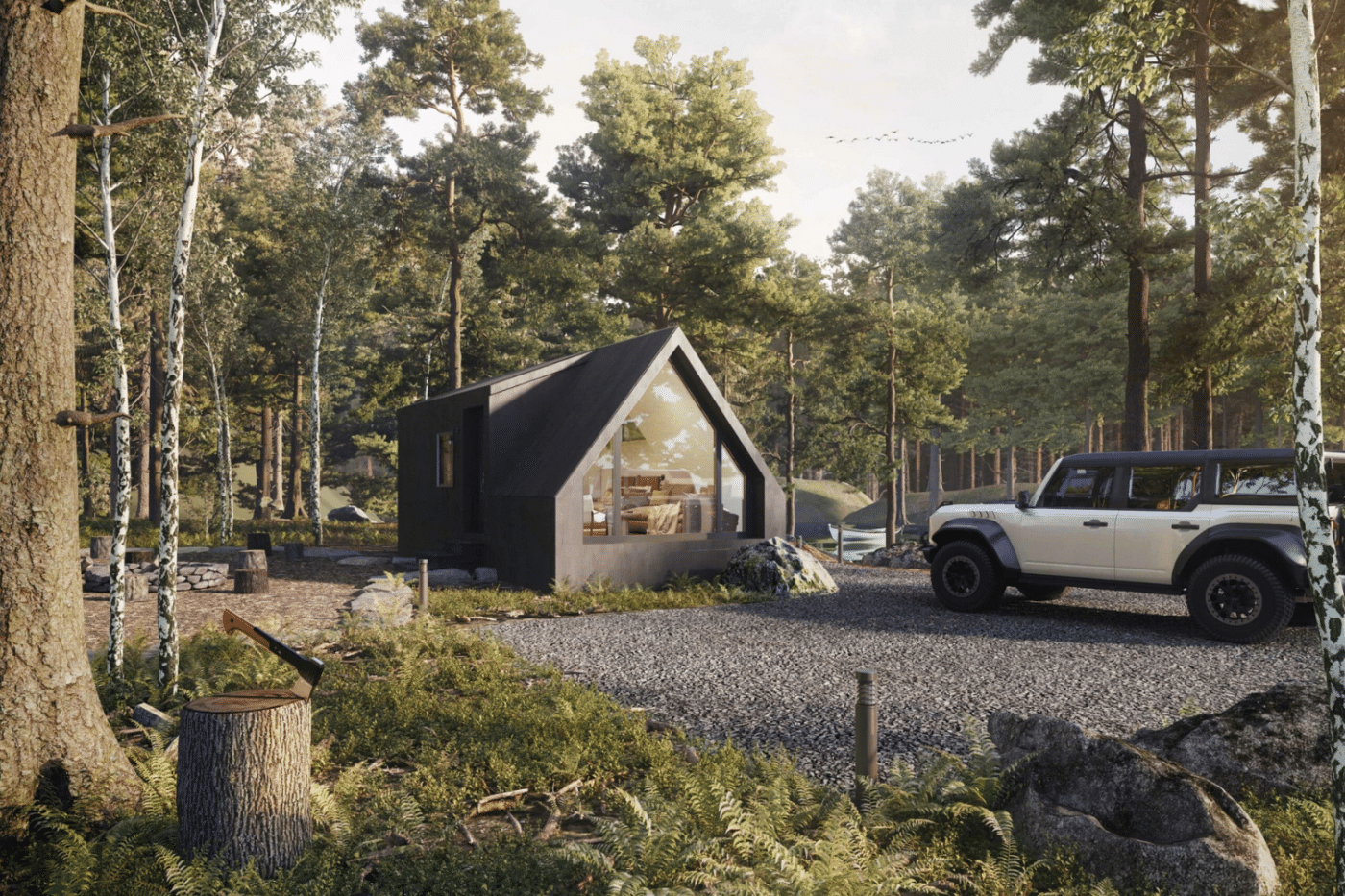
What Kinds of Tiny Homes Are Allowed In Colorado?
Tiny Homes can be permanently constructed on vehicle chassis and not self-propelled. Tiny Homes do not include recreational park trailers, recreational vehicles, semitrailers, or intermodal shipping containers.
Do You Need A Permit For A Tiny Home In Colorado?
Yes! Permit requirements vary by county, but most often, a permit is necessary. Find your county above and get in touch with your respective authorities.
How Much Does It Cost To Build A Tiny Home In Colorado?
The cost of building a Tiny Home in Colorado can vary widely based on several factors, including size, materials, location, and whether you build it yourself or hire professionals. On average, building a Tiny House in Colorado can range from $30,000 to $100,000. DIY builds typically cost less, ranging from $20,000 to $50,000.
Professionally built Tiny Homes can cost between $50,000 and $100,000 or more, depending on the level of customization and luxury finishes. Additional costs may include land, permits, and utility connections. If you’re interested, request a quote for more information.
Can A Park Model Tiny Homes Have Multiple Bedrooms and Bathrooms?
Yes, Park Model Tiny Homes can have multiple bedrooms and bathrooms. While they are generally smaller than traditional homes, Park Models are designed to maximize space and efficiency.
What Features Are Included In A Park Model Home From Zook Cabins?
Park Models from Zook Cabins provide extensive customization options, allowing you to personalize every aspect from kitchen layouts to bathroom designs and bedroom configurations, ensuring your home meets your exact preferences. Choose from a wide range of customizable features including flooring, cabinets, countertops, faucets, shingles, and doors. Outdoor enhancements such as furniture and fire pits are also available, adding to the flexibility and comfort of your living space.
How Small Does A House Have To Be To Be Considered A Tiny Home?
There is no universally defined size for a Tiny Home, but it typically refers to a residential dwelling that is significantly smaller than the average home. Generally, a Tiny Home is considered to be between 100 to 400 square feet in size.
However, this can vary based on different interpretations and local regulations. The key characteristics of a Tiny Home are its compact size, efficient use of space, and often its portability or ability to be placed on a foundation.
What Is The Cheapest Place To Put A Tiny Home In Colorado?
Finding the cheapest place to put a Tiny Home in Colorado depends on several factors, including land availability, zoning regulations, and proximity to amenities. Generally, rural areas or counties with more lenient zoning laws may offer more affordable options.
Counties such as Pueblo, Conejos, and Costilla are known for their lower land prices compared to more urban areas like Denver or Boulder. However, it’s important to research local regulations and consider factors like access to utilities and community services when choosing a location for a Tiny Home in Colorado.
Is There A Minimum Size My Tiny Home Must Be In Colorado?
In Colorado, minimum size requirements for Tiny Homes can vary based on local zoning and building codes. Generally, if the Tiny Home is built on a foundation and intended for full-time living, it must meet local building codes, which often specify minimum square footage requirements for habitable dwellings.
Are Park Model Tiny Homes A Good Investment?
Park Model Tiny Homes are a great investment, they offer a cost-effective alternative to traditional housing options. Their flexibility in placement provides versatility and potential for rental income as vacation rentals or long-term accommodations. It’s important to consider ongoing costs such as maintenance and possibly land lease fees, as well as fluctuations in resale value based on market demand and location. Find out about our affordable Park Models.
What Do Other States Say About Tiny Homes?
Want to know if your stay is pro-tiny living? Take a look at the table below and learn how each state functions.
